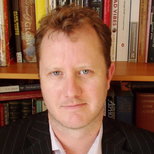The pseudo-economics of preventive care
SUGGESTED



Mistakes have certainly been made in the UK’s handling of COVID-19 but it is difficult to attribute them to ‘under-funding’ per se. The NHS budget has never stopped rising and Public Health England’s (PHE) budget for ‘protection from infectious diseases’ rose from £52 million in 2014/15 to £86.9 million in 2018/19. Local authorities have seen real term cuts, but they are not responsible for pandemic planning.
The ring-fenced public health grant to local authorities, which was £3.3 billion in 2018/19, grew by 4.8 per cent this year and there will doubtless be demands for it to rise further. If prevention is worth a pound of a cure, it seems obvious to invest more in prevention. The obvious answer is not always the correct one, however, and multi-billion-pound spending decisions should not be guided by folk wisdom.
Many of the arguments made for increased spending on public health are based on a misunderstanding of economics. A study published in the Journal of Epidemiology & Community Health in 2017 is often cited as evidence that ‘[e]very £1 spent on public health in UK saves average of £14’. This implies a direct saving to taxpayers through the prevention of future healthcare costs, but that is not what the study looked at. It reviewed 52 pieces of research from around the world, covering a range of public health interventions, and concluded that, on average, they produced a return on investment to ‘the wider health and social care economy’ equivalent to £14 for every £1 spent. This is neither a cash sum nor a saving. The bulk of it comes from putting a monetary value on a year of life and multiplying it by the number of life years expected to be saved by the interventions.
Years of life clearly have value and there is nothing wrong with framing them in financial terms for the purpose of economic analysis, but the benefits that come from better health are largely intangible and are principally bestowed on individuals. For the most part, the ‘social value’ created does not yield a financial return on investment.
By way of analogy, a local council might decide to erect a statue to a revered character at a cost of £10,000. An economist could estimate its social value by finding out how much the residents are prepared to pay to keep the statue. If a thousand residents are prepared to pay £20 each, the social value of the statue is £20,000. This shows us that the statue has value, but it would be an obvious mistake to claim that the statue has boosted the local economy by £20,000 or has saved taxpayers £10,000.
The academics who came up with the claim that public health spending yields a 14:1 return on investment (ROI) make a similar mistake when they say:
‘First, even with the most rudimentary economic evaluations, it was clear that most public health interventions are substantially cost saving…’
This is not true. The study looks at cost-effectiveness, not cost-savings.
The authors make a further mistake by drawing a direct parallel with business investment, saying that at an ‘ROI of 14.3 implying a cash return of 1430% would sound too good to be true in the financial world’. Indeed it would, but the ROI estimates do not represent a financial profit, nor is the return on investment a ‘cash return’.
If academic researchers are unable to distinguish between cost savings and cost effectiveness, what hope is there for journalists and lay people? David Buck of the King’s Fund notes that the ‘increasingly common misunderstanding and misuse of the term “return on investment” and its conflation with “cost saving” to public services – usually the NHS – are a cause for concern’.
The World Health Organization is equally guilty of using misleading terminology. The title of its 2018 publication Saving Lives, Spending Less implies that expenditure on public health more than pays for itself. This message is made explicit in the text which says:
‘Every US$1 invested in the WHO Best Buys will yield a return of at least US$7 by 2030’
‘Best Buys’ are the lifestyle policies favoured by the WHO, including higher taxes on tobacco, reformulating food, and restricting the availability of alcohol. The authors of Saving Lives, Spending Less claim that fully implementing the WHO’s sixteen Best Buys ‘can generate $350 billion in economic growth between now and 2030’. Closer inspection of their methodology shows that neither the 7:1 claim nor the $350 billion claim actually relate to economic growth. As with the 14:1 claim, the authors bundle together real financial benefits with huge estimates based on the social value of a life year.
The WHO further compounds the problem by ignoring the additional costs that will be incurred by those who live longer. A study published in the Journal of Public Health found that just 15 per cent of public health interventions in England were cost-saving. This is in line with a systematic review published in the New England Journal of Medicine which found that fewer than 20 per cent of preventive measures ultimately save money. The majority led to greater healthcare costs in the long run as people aged and developed other health conditions.
It not possible to tell from the available data whether England’s current public health budget of £4 billion is too little, too much or about right, but the law of diminishing returns leads us to two conclusions. Firstly, that the marginal ROI must decline as more money is spent, assuming the most cost-effective measures are the first to be implemented. Secondly, spending more money on public health will not always be the best use of resources. It would often be better to simply spend it on healthcare.
Chris Snowdon is the author of the IEA Briefing ‘False Economies. Myths about public health spending’.
2 thoughts on “The pseudo-economics of preventive care”
Comments are closed.





Refreshing and intriguing analysis. Thank you
‘The WHO further compounds the problem by ignoring the additional costs that will be incurred by those who live longer.’ This is also a failing in the NHS of epidemic proportions (apologies for the hyperbolic use of ‘epidemic’!). I have seen many ‘invest to save’ cases in the NHS. They amount to nothing less than a turf war for resources between clinical disciplines. And because it’s a turf war, the economic arguments are invariably confined to the discipline in question – ‘spend ‘X’ on increasing coverage of this cardiac test to save ‘Y’ on fewer heart attacks.’ They don’t then go on to say, ‘of course, against that saving you have to net off the cost of the cancer and the Alzheimer’s that will eventually get them instead of the heart disease.’ To all intents and purposes, NHS invest to save arguments carry with them the implicit assumption of human immortality!!